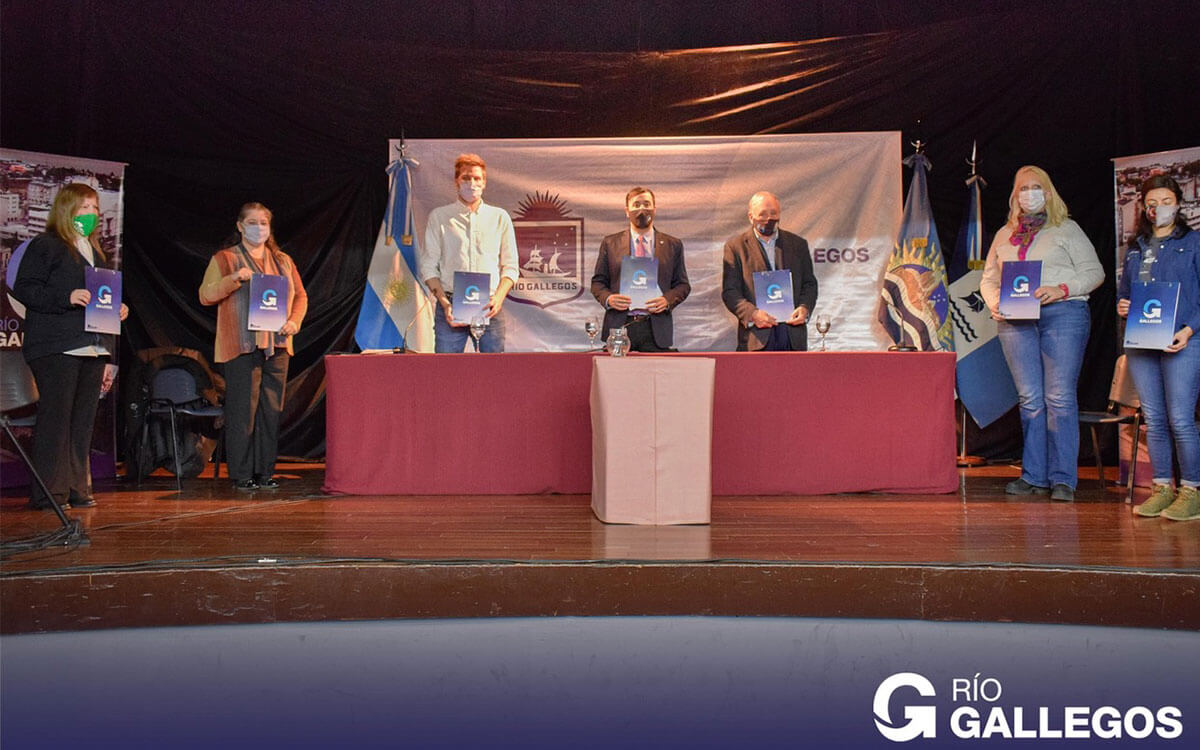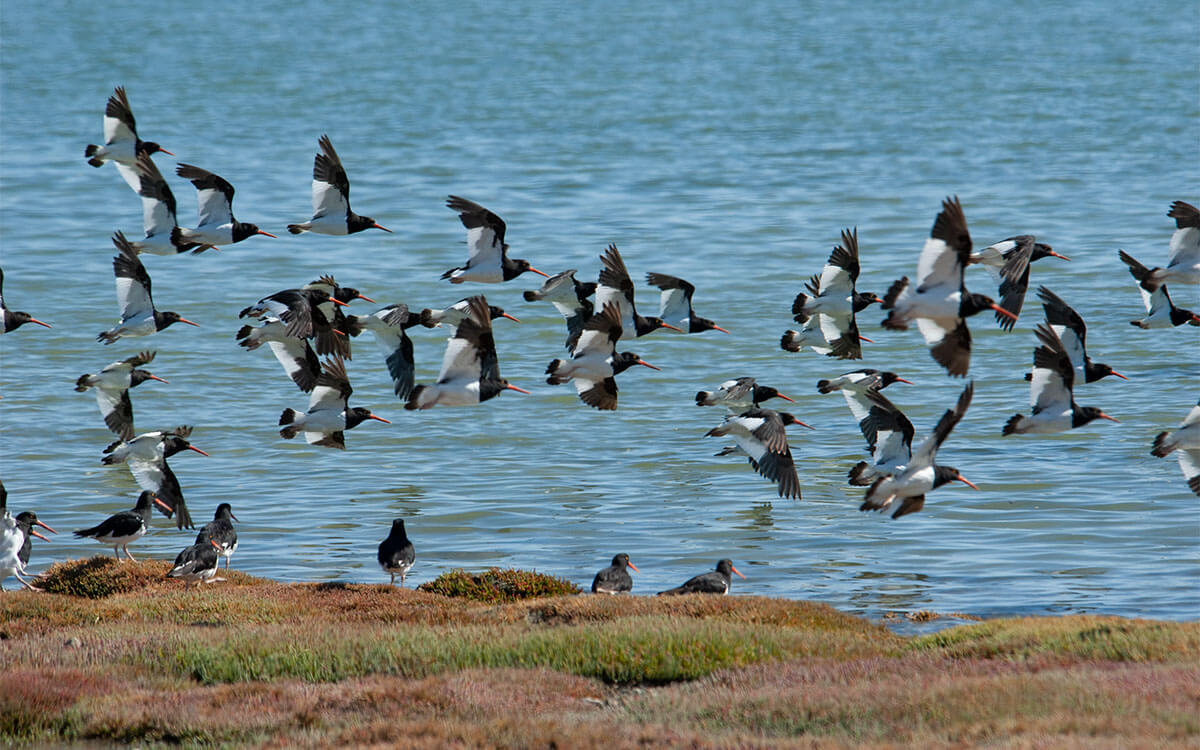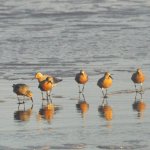In April, a Letter of Inter-Institutional Agreement was signed with the intent to drive forward a cooperative governance action plan” to strengthen the management and conservation of the Río Gallegos Estuary, a WHSRN site of International Importance since 2005.
The plan was developed and approved following a participatory process of consensus building in March 2021.The guiding principle of the plan is the protection of wildlife and their habitatand the assurance of the sustainable provision of ecosystem services for the resilience and wellbeing of the local community. The Plan has three strategic objectives: collaborative governance, effective management, and compliance with current regulations for the protection of natural heritage.
The signees of the Letter of Agreement were Mariano Bertinat, Secretary of State for the Environment; Dr. Javier de Urquiza, President of the Provincial Agrarian Council (Consejo Agrario Provincial); Pablo Grasso, Intendente Municipal of Río Gallegos (Mayor of Río Gallegos); Guillermo Melgarejo, Dean of the Unidad Académica Río Gallegos de la U.N.P.A. (Río Gallegos Academic Unit of U.N.P.A.); Vanina Ibáñez, Secretary of the Asociación Ambiente Sur (Environment Association of the South); Lucrecia Bravo, Subsecretaria de la Secretaría de Estado de Pesca y Acuicultura (Subsecretary of the Secretary of State of Fish and Aquiculture); and Ivanna Fanin, Coordinator of the Ente de Manejo Participativo del Sistema de Reservas Naturales Urbanas de Rio Gallegos (Entity for Participatory Management of the Rio Gallegos Urban Nature Reserves System).
The discussion consensus on the Collaborative Governance Plan for the Río Gallegos Estuary was developed within the framework of the Coalitions for Shorebird Conservation initiative, which seeks to support diverse conservation efforts for these birds at the hemispheric scale, in 13 sites across the Americas. Ambiente Sur is the main partner in Argentina, executing actions in Río Gallegos and Río Grande, Tierra del Fuego.
The process was facilitated by Diego Luna Quevedo, Manomet’s Senior Specialist for Policy and Governance. Diego shared that “one of the principal lessons that the Covid19 crisis has taught us is the need to reassess our relationship with nature. We need new agreements and good governance to integrate conservation into the equation of local sustainability”.

Partners who signed the agreement at the headquarters of the Municipal Theater of Río Gallegos, Argentina.
After signing, Germán Montero, Executive Director of the Asociación Ambiente Sur, reflected: “This agreement represents a landmark of great importance in advancing the effective management of the Estuary. We trust that the collective actions proposed with government institutions, non-government organizations and the academic sector, will allow us to significantly improve the management of the Estuary and reduce the threats that it faces. From Ambiente Sur, we reaffirm our commitment to the conservation of the Estuary for future generations”.
Building Collaborative Governance
As a launching pad for the collaborative process, a conceptual framework for Good Governance that would be applicable to the conservation of the Río Gallegos Estuary was presented and discussed in the first of the three virtual conversations. This served as the basis for identifying the principal problems and the proposal of a set of measures and collaborative solutions for improving the management and supervision. At a second meeting, the bases for a process of Good Governance were built, with the participants discussing themes such as: objectives, roles and functions for local governance, opportunities, obstacles and key stakeholders.
During the last conversation and on the basis of the common denominators identified in the previous sessions, the governance action plan was formulated, where the strategic objectives, expected results, actions and available resources were all discussed. Notably, one of the pillars of the Plan is the launching of an inter-institutional working group,“Coordinación Estuario” (Estuary Coordination), to support the coordinated management agenda for the period 2021-2022.

Magellanic Oystercatcher (Haematopus leucopodus) at WHSRN site Río Gallegos Estuary in Argentina. Photo: Santiago Imberti
The Plan’s intent is to improve the conservation conditions through participatory management, reducing threats and disturbances in the Estuary and protecting wildlife and habitats of critical conservation concern. Another fundamental aspect of the agreement is ensuring compliance with the existing environmental regulations with the understanding that coordination between supervising institutions improves the prospects of compliance with the rules.
Cover Photo: WHSRN Site Río Gallegos Estuary Photo: Santiago Imberti






